Interesting Facts About the Dead Sea for Kids (2024 Updated!)
Welcome to the mystical realm of the Dead Sea!
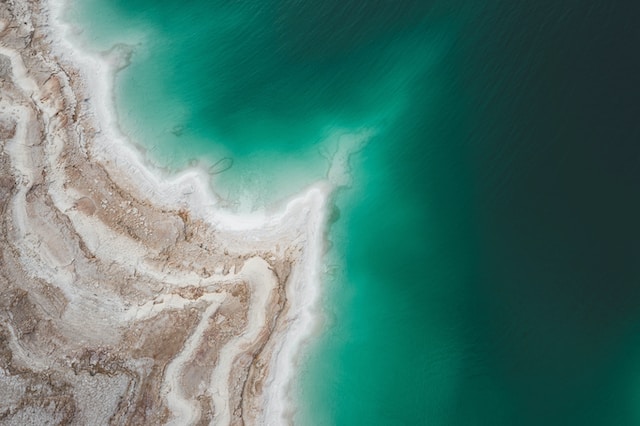
We will dive into the enchanting facts about the captivating Dead Sea. With its shimmering waters and secrets buried deep in history, it holds tales that will leave you wide-eyed with awe.
What is the Dead Sea?
The Dead Sea is nestled between Jordan and Israel, this awe-inspiring wonder boasts a remarkable secret. Compared to regular seawater’s 3.5% of salinity, it has an average salinity of about 33.7%. This high salt concentration makes it nearly impossible for most living creatures to survive, thus giving rise to the name the “Dead Sea.”
Jordan River is the reason for the Dead Sea’s unique salinity. The river carries an array of minerals from the surrounding mountains. It leaves a concentration of salts and minerals behind as the water enters the sea and evaporates under the blazing sun.
The Dead Sea is a treasure chest of minerals known for their therapeutic properties, such as magnesium, calcium, potassium, and bromine. It’s no wonder visitors flock from far and wide to indulge in its mineral-rich waters.
Did you know that the Dead Sea is also Earth’s lowest point, lying about 430 meters (1,411 feet) below sea level? It’s a natural marvel that beckons explorers and scientists alike.
The Marvels of High Salinity
So, what’s the big deal about salinity, you may wonder? Well, let’s find out together!
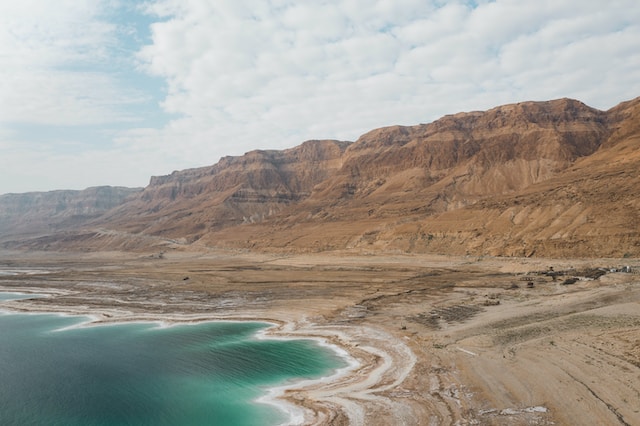
Salinity refers to the amount of salt dissolved in water. In the case of the Dead Sea, it’s like a giant saltwater swimming pool! The salt content here is so high that it creates a magical effect – you can float without even trying! That means you don’t need any floating device to keep you afloat.
Don’t try to dive headfirst into the water like you’re used to at the pool. The high salt concentration might sting your eyes and nose. Ouch!
Health Benefits of the Dead Sea’s Mineral-Rich Waters
For centuries, people have flocked to the Dead Sea to soak in its mineral-rich waters. The unique combination of salts and minerals works wonders for your skin and overall well-being. It’s like Mother Nature’s own special elixir!
You might have heard of mud masks, but have you ever heard of a mud bath? Well, you can treat yourself to a mud bath at the Dead Sea like no other. The mud here is full of nutrients that make your skin feel smooth and refreshed.
The Dead Sea has a lower level of harmful UVB rays, which means you can soak up the sun without worrying too much about getting sunburned. Remember to wear sunscreen, though – even in paradise, we need to take care of our skin!
Conservation Efforts
Protecting this fragile and one-of-a-kind ecosystem is of utmost importance. Multiple organizations and environmentalists are working tirelessly to preserve the unique flora and fauna of the Dead Sea region.
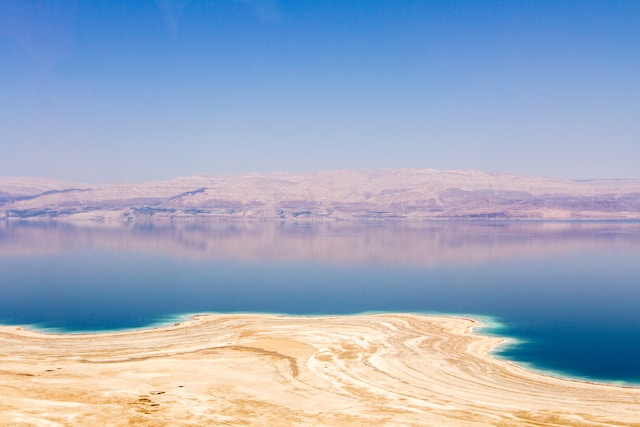
This includes habitat restoration and monitoring wildlife populations. Not only that, they also focus on promoting sustainable tourism practices to ensure that future generations can cherish this extraordinary place’s wonders.
Facts about the Dead Sea’s Flora and Fauna
The Dead Sea isn’t just a place of otherworldly beauty and extreme saltiness; it’s a haven for a fascinating array of life that has adapted to its challenging environment. Some plant species like the “Dead Sea Osteospermum” and the “Salt-loving Shrub” thrive by cleverly conserving water and regulating their salt intake.
The Dead Sea also hosts captivating fauna, including the vibrant “Dead Sea Killifish” and the graceful “Dead Sea Sparrow.” These remarkable creatures have developed unique survival abilities in hypersaline waters and unforgiving climates.
Witnessing the dance of adaptation between the flora and fauna is a testament to the marvels of nature. These resilient life forms not only contribute to the region’s ecological balance but also inspire us to preserve such extraordinary habitats for the sake of future generations.
1. A Delicate Balancing Act
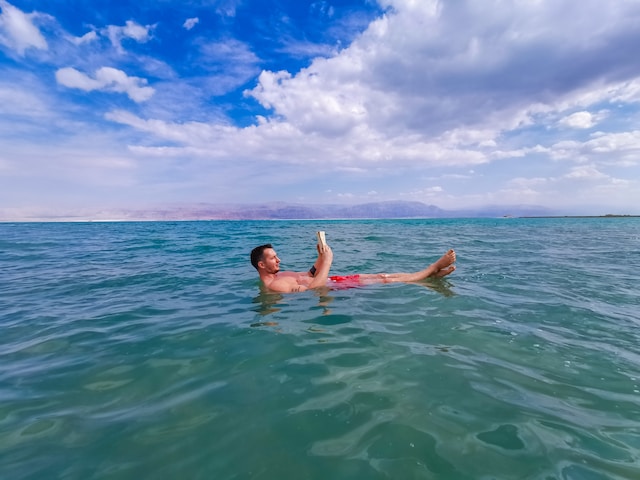
Amidst the salty waters and mineral-rich mud, you’ll find a delicate ecosystem supporting various plant life. Some remarkable flora species include the Dead Sea Ostrich Fern, which has developed a special salt-filtering mechanism, allowing it to flourish despite the challenging conditions. Another impressive sight is the bloom of colorful salt-loving flowers, such as the Dead Sea Primrose, painting the landscape with vibrant hues.
2. Where Life Finds a Way
While the name “Dead Sea” may suggest nothing lives, it’s far from lifeless! One of the most famous inhabitants is the Dead Sea Sparrowfish. This small thing has adapted to the high salinity levels and is the only fish that can survive in the Dead Sea’s waters.
3. Hidden Treasures
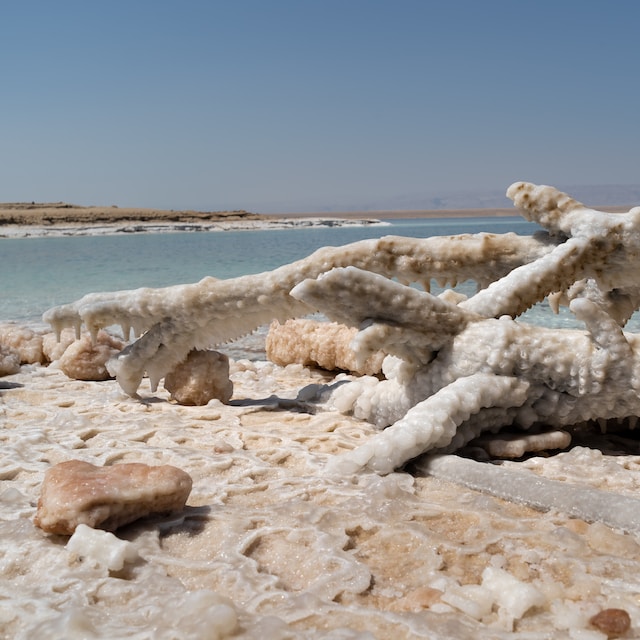
The desert landscape is home to various desert reptiles, such as the Desert Monitor Lizard and the Wadi Araba Snake. They have developed unique adaptations to thrive in the arid conditions surrounding the Dead Sea.
4. Migratory Haven
The Dead Sea is an essential rest stop for migratory birds during their long journeys. Watching colorful birds like pelicans and herons gracefully glide across the serene waters is something no one wants to miss. The region is a rich food source for these birds.
Frequently Asked Questions
What causes the high salinity in the Dead Sea?
The Dead Sea’s high salinity is because the water flows into it from several sources, but it lacks outlets. It has no rivers or streams to drain excess water. The water evaporates, leaving behind concentrated minerals and salts, increasing the overall salinity.
What causes the high salinity in the Dead Sea?
The Dead Sea’s high salinity is because the water flows into it from several sources, but it lacks outlets. It has no rivers or streams to drain excess water. The water evaporates, leaving behind concentrated minerals and salts, increasing the overall salinity.
Is it true that no marine life can survive in the Dead Sea?
Yes, that’s correct. The high salinity levels in the Dead Sea make it incredibly challenging for most aquatic organisms to survive. Only a few types of bacteria and tiny microorganisms, known as halophiles, can withstand such extreme conditions. Some are mentioned in the article.
How did the Dead Sea get its name?
The name “Dead Sea” comes from its high salinity that prevents aquatic life from surviving.
Conclusion
In conclusion, the Dead Sea is a mesmerizing natural wonder that captivates with its high salinity, unique ecosystem, and rich history.
From the thrill of floating effortlessly to the healing properties of its mineral-rich waters, this enchanting destination offers an unforgettable experience for kids and adults alike.
